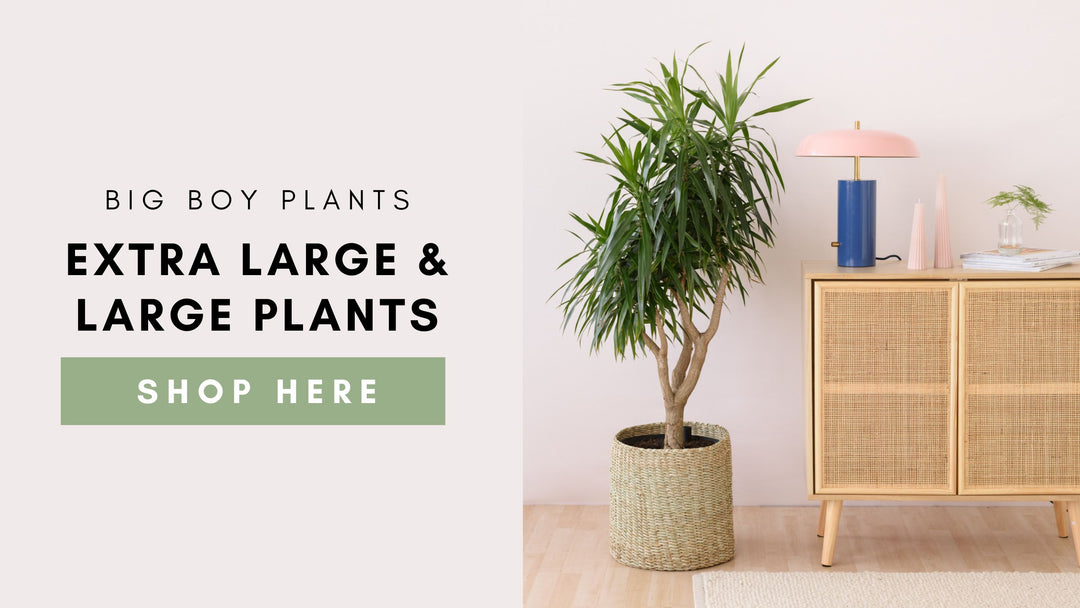String of Hearts Care Instructions
Scientific name: Ceropegia Woodii
Synonyms: Chain of hearts, Collar of Hearts, String of Hearts, Rosary Vine, Hearts-On-A-String, and Sweetheart Vine.
It is no secret that String of Hearts is among the most popular and sought after succulents in the world and features highly on the top trending plant lists every year. The String of Hearts houseplant comes in many forms, from variegated to slight variations of leaf shape, such as with the String of Spades and String of Needles.
These delicate vines feature heart-shaped leaves and texturally patterned foliage, which provides a wonderful visual appeal to anyone whose eye the catch. Moreover, they are adored for their ability to live in a variety of environments, whether indoors or outdoors on a sheltered patio or balcony.
As a vine, The String of Hearts makes an attractive hanging display, since the vine grows quickly and creates a dense curtain of hearts. In the spring and summer, they will produce funky vessels-shaped flowers, adding an extra element of interest to these delightful plants.
 The Ceropegia genus originates from South Africa with the String of Hearts being a variant of Ceropegia Linearis. These vines are commonly found growing as epiphytes in dense humid woodlands in the north east of the country, where they store water in their fleshy leaves during times of drought, enabling them to tolerate some neglect.
The Ceropegia genus originates from South Africa with the String of Hearts being a variant of Ceropegia Linearis. These vines are commonly found growing as epiphytes in dense humid woodlands in the north east of the country, where they store water in their fleshy leaves during times of drought, enabling them to tolerate some neglect.
They do well in bright filtered light, and will happily grow in a touch of direct sunlight, though during the heat of the day it is best to avoid direct sunlight. Being epiphytic by nature, they'll also appreciate some humidity, however average room humidity will do little to stop them looking pristine. As a result, they make a perfect beginner plant for any interior space that seeks intrigue and awe.
Toxicity: These plants are generally not known to be toxic to pets or humans.
String of Hearts Common Symptoms
- Wrinkled foliage: When foliage becomes wrinkled, it is typically a result of your houseplant being underwatered. Even though succulents can tolerate infrequent watering, it is best to water once the soil has completely dried and to avoid prolonged periods of dryness to keep them looking lush and happy. To rehydrate a severely dehydrated plant, soak it for an hour in a sink or bucket of room temperature water. Let the pot drain well for a few minutes, to ensure all the excess water has drained. Then, replace the plant into its original location. Be sure to not let your plant sit in water. How to Tell If Your Plant Is Underwatered or Overwatered.
- Leaf drop, yellowing foliage or mushy leaves: String of Hearts do not handle consistently moist soil very well and tend to rot easily if kept too wet. If you find that your String of Hearts has excessive leaf drop, yellowing leaves or some of them are mushy, then there is a high likelihood that you may be overwatering. Ceropegia prefers to dry well between each watering and do not tolerate saturated potting medium. Be sure that your planter is also draining effectively, and always water according to your lighting conditions. The less light, the less you will need to water.
- Bare on top but foliage down the sides: This is a clear indication that your String of Hearts is not receiving enough light from above. The String of Hearts are lovers of bright indirect light with some soft sun and should be placed where they can receive light from all angles otherwise they will only grow where they get light and cause a bare top layer in the pot. Another trick is to pin back the tuberous growths or leaf nodes back onto the top layer of soil to root. You can use hairpins to "clamp" them down. This will create a fuller bushier plant.
- Pests: Ceropegia are relatively hardy plants, however, they can suffer from Mealybug or Spider Mite if not kept in their optimal growing conditions. Be sure to avoid any undue stress to your houseplant by following its care requirements as best as possible in your given environment. If an infestation is present, treat your plant with an organic pesticide, such as Pyrol, until the infestation has abated. Read on to find out more about common household pests.
String of Hearts Care Instructions
- Origin: South Africa
- Height: Vines can reach 2 - 3m in length.
- Light: Loves bright filtered with some early morning direct sunlight
- Water: Allow the soil to dry out completely between each watering. Avoid soggy soil as this will lead to rot.
- Humidity: Average to high humidity is best. In high humidity water less often.
- Temperature: Ideal temperatures range from 18°C - 26°C.
- Soil: A well-draining organic potting mix or succulent potting mix.
- Fertilizer: Use a well balanced organic fertilizer once every month during Spring through Summer.
- Repotting: String of Hearts will not need frequent re-potting, however, if you find that the plant has stopped growing or has become too top-heavy for your planter, you can upsize it to a Pot a maximum of 5cm larger than the previous. No special care is required when re-potting just be aware of not damaging too many of the roots.
- Propagation: The String of Hearts is a fantastically easy plant to propagate. Choose a few nice long strands of approximately 10cm in length and snip. Lay a few strands on top of a well-draining, moistened potting medium. Keep the top layer of potting mix moist until the plant has produced roots that have anchored themselves into the potting mix. Keep in a bright warm position to encourage faster growth. Another way to propagate is to divide the plant when re-potting or to use the water propagation method. Read on for More on propagating Succulents.
If in stock, shop String of Hearts here




